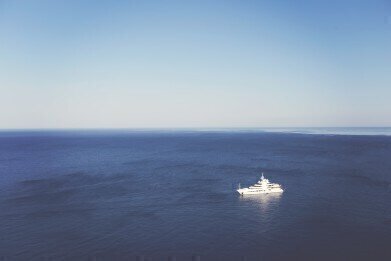Air Clean Up
Will Toxic Fumes from Giant Cruise Liners Worsen London’s Air Pollution?
Apr 13 2016
Plans to build a wharf on the Thames at Greenwich in London may have hit a snag as protestors have complained that its construction would significantly exacerbate the already torrid levels of pollution in the nation’s capital. The wharf, which is being designed to house giant cruise liners, is touted as being yet another obstacle to London meeting the oft-failed limitations imposed upon it by the EU.
The plans for the wharf include provision for 240m long vessels and were given the green light by the local council last year, but have since been challenged by concerned and angry local resident groups.
Lofty Ambitions
The developers involved in the project are aiming to lure the lucrative giant cruise liner industry to London. Capable of housing as many as 1,800 passengers and 600 staff, the enormous vessels would bring a hefty economic boost to the capital’s shores. With a projected total of 55 liners docking annually, the financial boon would not be insignificant.
On the other hand, the logistics of dealing with such a scenario would also involve significant environmental compromises. For example, the council did not insist that developers include the ability to power the docked vessels, which would typically reside at the Greenwich terminal for three days.
Without an onshore power source, the vessels would be forced to keep their auxiliary diesel engines running, which would entail burning up to 16,800 litres of diesel on a daily basis for six months of the year. That is equivalent to 688 HGVs running their diesel engines without pause at the Greenwich location (other estimates have put the figure closer to 2,000 HGVs for larger ships)… and all this is being touted for an area which is already failing to meet EU standards for air quality. No wonder it’s unclear how long it will take for London's air to become safe.
Digging a Bottomless Pit of Pollution
Even though a 2012 EU ruling curbed the amount of sulphur content that cruise liners were allowed to use in their fuel, this has only affected sulphur dioxide (SO2), or acid rain as it’s more commonly known. The low-sulphur fuel has done nothing to alleviate elevated levels of nitrogen oxides (NOx), toluene, benzene and formaldehyde, all of which are prevalent in diesel and cause serious health repercussions.
NOx in particular poses a threat to the health and wellbeing of local residents, linked as it is with respiratory and coronary problems and is seen as one of the leading causes of premature death by pollution. Though Chinese power plants emit as much NOx as all of the passenger cars in the world, the shipping industry could be closing the gap on Asian factories if trends continue.
“Air pollution emissions from ships are continuously growing, while land-based emissions are gradually coming down,” commented a spokesman for the Transport and Environment Group. “If things are left as they are, by 2020 shipping will be the biggest single emitter of air pollution in Europe, even surpassing the emissions from all land-based sources together.”
Clearly, plans to build a massively polluting wharf in an area which already suffers from harmful levels of contamination will do nothing to stop the damaging effects of shipping or improve air quality and reduce transport-related pollution in London.
The resident groups continue their struggle.
Events
May 05 2024 Seville, Spain
May 13 2024 Munich, Germany
May 23 2024 Beijing, China
May 23 2024 Beijing, China
Jun 10 2024 Algiers, Algeria














